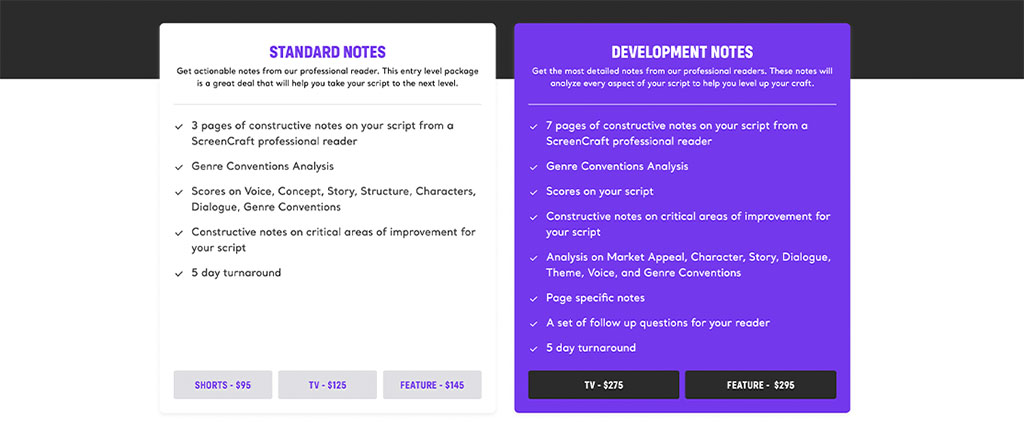There is something exciting about Mother Nature’s wrath. When done right, cinematic depictions of disasters are compelling because they dance between plausibility and fantasy while we watch from the safety of a dark, air-conditioned room. We are safe, but there is a lightning bolt of excitement as we survive the on-screen disasters with the leading characters.
That is exactly what I felt while watching Twisters in a crowded theater.
From the looming tornadoes hidden in the darkness of the night to the EF-5 twister that haunts Kate (Daisy Edgar-Jones), great disaster films have long scratched an itch in our brains to see these devastating tragedies, which can be scary and unmanageable, tamed by a small group of people. Therein lies the challenge: How do you write a great disaster film?
While there are many bad disaster movies we can learn from, Twisters and its original film, which it borrows little to nothing from but the title and Dorothy, are two pillars in the genre that can help guide future disaster movies.
What Is a Disaster Movie?
The name of this subgenre of action gives it away, but the disaster genre focuses on catastrophic events, often large-scale ones that cause significant amounts of destruction and chaos. While many of these films focus on natural disasters like earthquakes, volcanic eruptions, tsunamis, and tornadoes, some explore man-made disasters like nuclear meltdowns, industrial accidents, or space-related catastrophes.
While we understand the real-life devastation that these disasters have on communities—nowhere is this clearer than in Craig Mazin’s (The Last of Us) devastating HBO mini-series Chernobyl—seeing these large spectacles told through the lens of action or horror provides high enough stakes for the main characters to bring us to the edge of our seats.
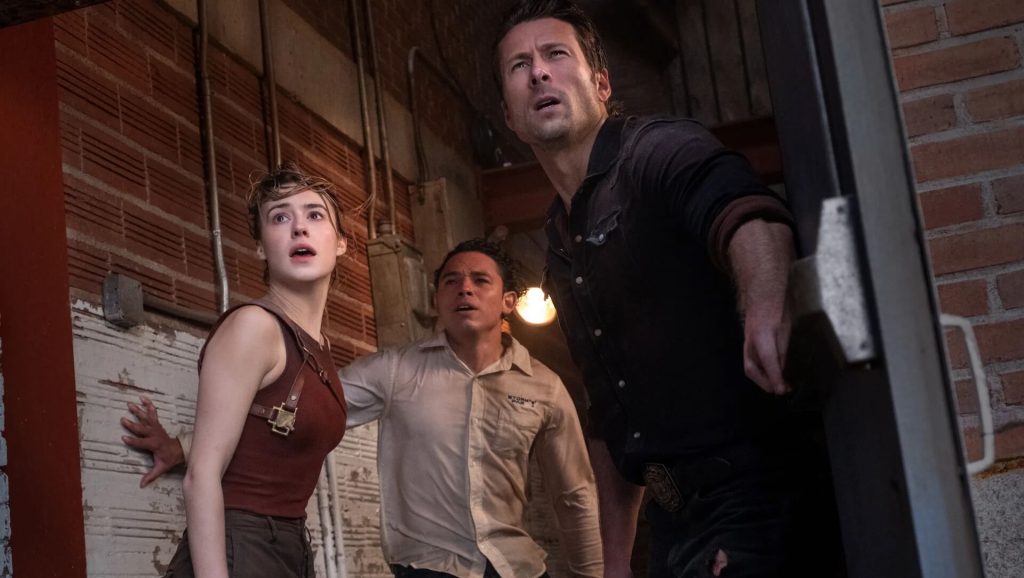
‘Twisters’ (2024)
How To Write a Disaster That Works
Disaster movies make the most of the medium—especially in an era where CGI effects look hyper-realistic—because the cinematic art form lends itself to spectacle. When we read about a disaster, we can imagine how it devastates a community. When we see it on stage, it lacks the awe-stricken sense of amazement and horror that comes from the intense presence of the threat. Still photography can only capture a moment, but what happens next?
Movies give disasters power because they can move with devastating effects, capturing the influence that these threats have on the characters and the audience. Arguably, the disaster genre is one of the few genres that takes full advantage of its art form, showcasing why movies matter.
In many ways, disaster movies work like monster movies. There is often a central threat, which can hold symbolic meaning, at the center of a narrative focused on human characters confronting the ethical or moral challenge established by the threat.
This is a broad definition, but it shows that both genres operate on the same idea, with different threats. Let’s break down the central tropes that make these two formulas so similar:
Central Threat
Like any good monster movie, the story builds around a threat that is either natural or man-made. Often in disaster movies, the threat puts the entire world at risk, instantly raising the stakes to the extreme. While this can effectively put the scope of the disaster into perspective for the audience, this world-ending disaster doesn’t always work.
The best disaster movies focus on a threat that puts a community at risk. The rest of the world functions normally, going about their days as if the looming disaster doesn’t affect them. Only our core group fighting the disaster understands the scope and stakes as they face off multiple times with the threat, which can effectively stress the audience out as the threats get bigger and more disastrous.
The main characters will often come head-to-head with these natural disasters three to four times throughout the screenplay, highlighting that—like monsters—these disasters are showstopping MacGuffins that push the characters’ narrative arcs toward that spectacular ending.
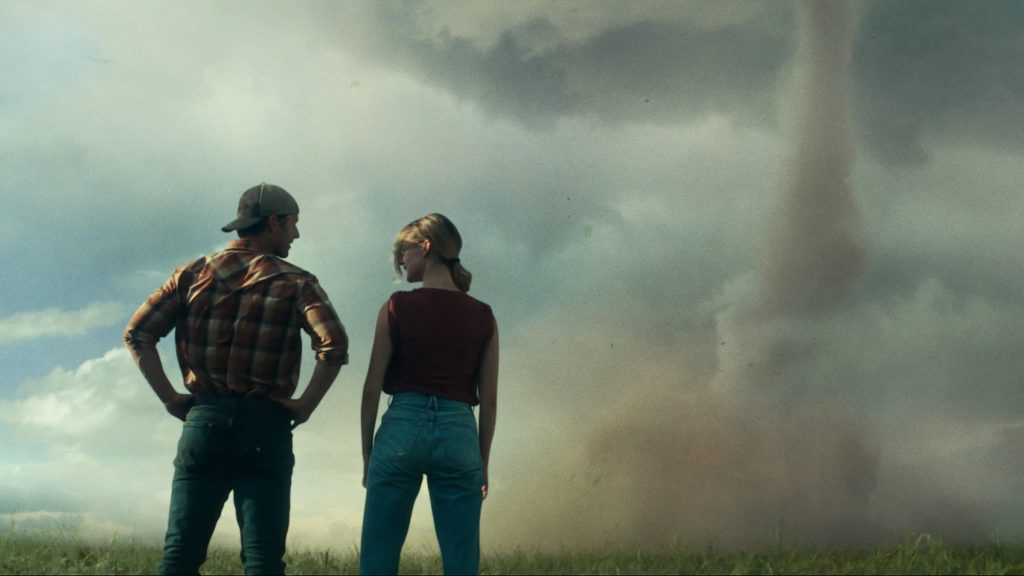
‘Twisters’ (2024)
Active Protagonist
An active antagonist can only be effective if it faces an active protagonist. These protagonists are often unlikely heroes who take on leadership roles to save others, but something is holding them back (until they learn how to overcome this challenge for the showdown).
Read More: Breaking Down the Character Archetypes of the Hero’s Journey
Lack of Closure with a Happy Ending
Monster movies and disaster movies often end on a happier note, but the threat isn’t gone forever. Instead, the story naturally ends with the resolution of the main character’s central issue. While this lack of closure leaves room for more questions (or sequels), the resolution often restores order and offers hope to the audience.
Natural disasters can’t be stopped. Instead, the ending offers a happy resolution where the main character achieves the goal established after encountering the threat on screen for the first time. While there is loss along the journey, those final moments feel worth the chaotic thrill ride they just went on.
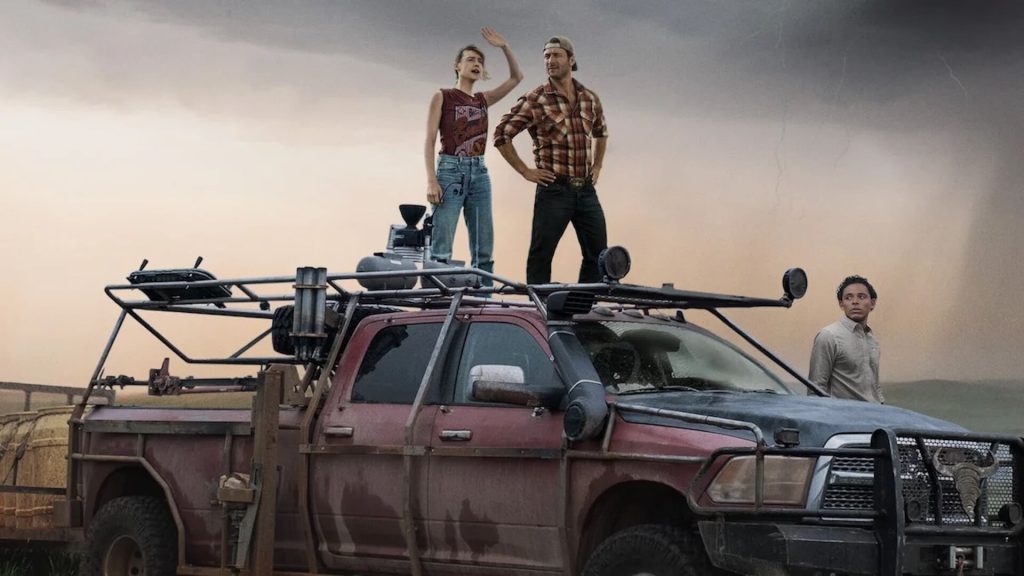
‘Twisters’ (2024)
Twisters Is a Disaster Movie That Works
There is a reason why Twisters whirled up $81.2 million during its opening weekend. It is a disaster movie that pulls the best lessons from Steven Spielberg’s best monster movies (Jaws, Jurassic Park), Jan de Bont’s action thrillers (Speed, Twister), and the disaster movies that have worked in the past (The Towering Inferno, Armageddon).
Despite missing that final kiss in the movie—thanks, Spielberg—Twisters sets itself up to be a great disaster movie by leaning into the genre’s tropes, adding an element of old-school blockbuster storytelling, and refusing to lean the one thing that often spells doom for many movies in the genre.
Twisters Follows the Genre’s Tropes
Like any great genre movie, Twisters finds a way to lean into the tropes nostalgically and excitingly.
From the multiple tornado showdowns to the evil corporation designed as doing the right thing in the name of science, Twisters finds a way to deliver old tropes in new ways. These tropes show us why people are running into the tornado rather than running away like everyone else.
While Twisters still features the whimsical trope of researchers who know tornadoes better than anyone else, Kate’s reluctant journey to put her traumatic past behind her and pursue her dream of helping those affected by the natural disaster overshadows the stakes that drove Jo (Helen Hunt) and Bill (Bill Paxton) to chase and study tornadoes.
Kate is working to develop a pitch to help “tame” tornadoes when they appear, even though she doesn’t destroy the disaster itself in the end. It is a happy ending that lacks closure because tornadoes still exist. It picks up where Twister left off, giving the audience a sense of victory and relief that the story’s goal has been achieved.
But Twisters shines when its characters show down with the tornadoes.
The filmmakers pulled one of the standout moments from the original film: the massive twister in the darkness. While this moment saw a drive-thru movie theater get destroyed in Twister, Mark L. Smith’s screenplay places the main characters, Kate (Edgar-Jones) and Tyler (Glen Powell), at a rodeo after they helped provide relief to a community hit by a tornado earlier that day. This intimate rodeo moment shatters as the lights go out, sirens blare, and people (and horses) run from an unknown threat in the darkness that we can only hear. It is only when the lightning flashes that we see a wall of darkness approaching fast. Instead of making this the second to final boss, like it is in the original film, this is just one of the showdowns to help develop Kate’s and Tyler’s character arcs.
You can lean on tropes to sell an idea or feeling. Instead, following beats or replicating moments from films that inspire your disaster story can act as shorthand for your story, but it only works if it feels earned.
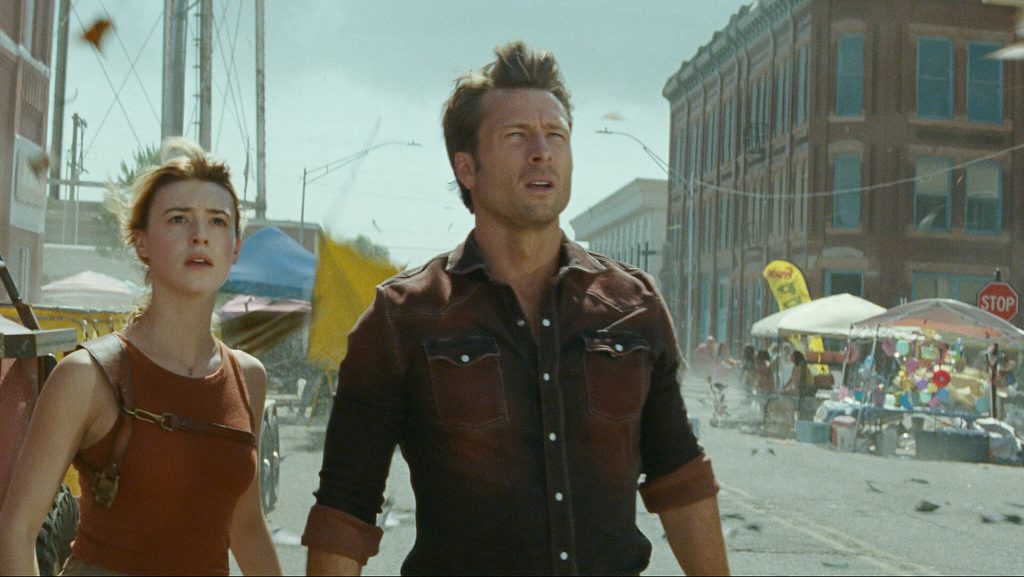
‘Twisters’ (2024)
Spinning Together Genres
While Smith’s script provided strong characters with powerful relationships shaped by their experiences with tornadoes, director Lee Isaac Chung’s vision for the film helped bring other genre elements to the story. In the production information for Twisters, Chung watched movies “about powerful forces of nature or monstrous things coming at you or looming above you,” like Jaws and War of the Worlds, and “driving movies” like The French Connection and Gone in 60 Seconds.
The elements that define these genres were already in Smith’s script, but Chung’s vision brought them to the screen, using distinct visual cues to showcase how genre-blending has become vital to modern cinema. While most modern audiences might not sense it, cinephiles can look at a shot’s framing and understand which foundational movie inspired the visual shorthand for what the action conveys.
While screenwriting allows writers the freedom to create great stories that could shine on the silver screen, the limited amount of language they can use to convey an idea through action and dialogue restricts them. Knowing how to convey a specific emotion depends on how you write it. Watching how moments you want to replicate appear on the screen (or in a movie’s screenplay) can help you develop the language that conveys these short codes to readers without leaning into tropes to spell everything out.
Read More: 101 Action-Packed Story Prompts
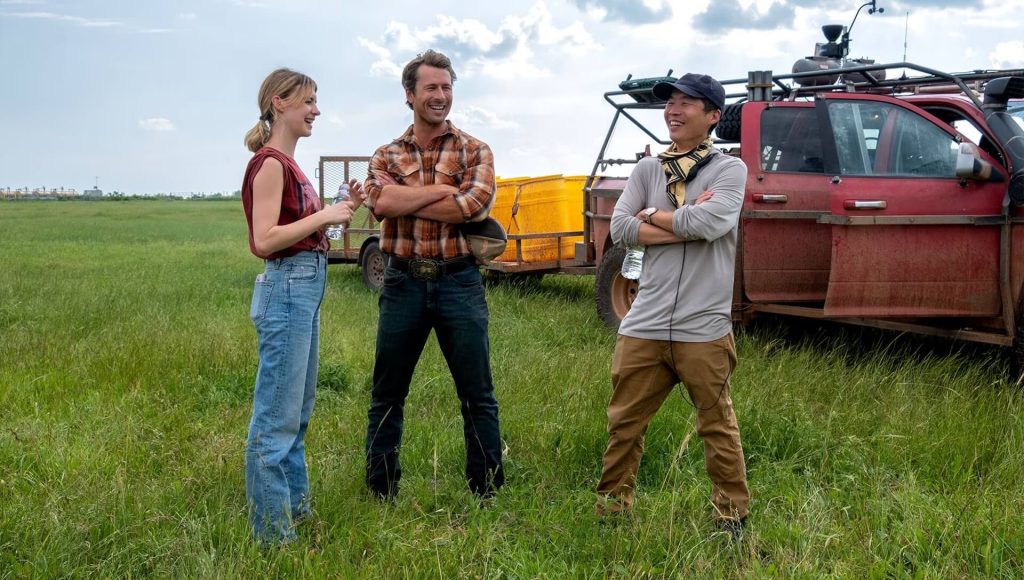
Lee Isaac Chung on the set of ‘Twisters’ (2024)
Twisters Is a Disaster Movie That Doesn’t Rely on One Thing
The spectacle is a huge selling point for a disaster movie. However, a disaster movie can’t be about the spectacle. Treat your disaster like a MacGuffin, and focus instead on the human story.
Even though the disaster at the heart of Twisters is not a new idea, it is the original story that builds on the familiar groundwork established by the original film. The spectacle of the tornadoes should still push redemption and romantic arcs forward, but why should we care about the spectacle? Twisters puts humans front and center, a focus that Twister largely ignored until the disaster directly affects the main cast. We see the impact of these natural disasters on communities and understand why Kate’s goals are worth rooting for.
Twisters is also in a strange place because what wowed the audience back in 1996 was the visual effects of the tornadoes. Modern audiences rarely find impressive CGI improvements impressive, so the disasters need to be bigger and more threatening. This means that the reward of surviving these disasters has to be worth the risk. This is why the filmmakers cut the infamous kiss scene from the final edit of Twisters.
“I also think that this movie is not about them finding love,” Powell said in an interview with Collider about why the kiss was missing after the EF-5 showdown. “It’s returning Kate to the thing that she loves, which is storm chasing. So that’s what you have at the end of the movie. They share this thing, which reinvigorates her passion and sense of home.
Audiences want to see humanity win at the end of the day, and Twisters provides that in an effective way that doesn’t feel mean towards humanity. Instead, it holds out a hand and asks us to hold on as we enter the eye of the storm.
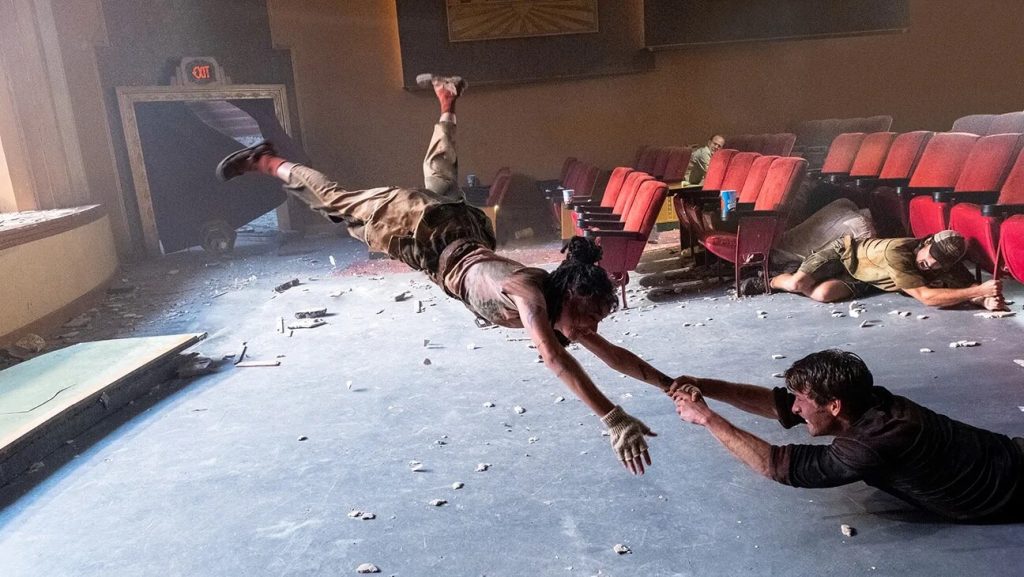
‘Twisters’ (2024)
—
Twisters is a disaster movie that reminds us why we are drawn to the genre. Sure, there are a lot of stinkers that make disaster movies a tricky subgenre to write, but great films like this one help guide us when we sit down to write about our greatest, uncontrollable fears. Following the genre’s tropes while putting humanity first over spectacle will help you craft a great disaster film like Twisters.
Read More: 100 Man Vs. Nature Story Prompts
Try our Genre Notes and get matched with a reader with relevant industry experience!
The post 3 Reasons Why ‘Twisters’ Works as a Disaster Movie appeared first on ScreenCraft.
Go to Source
Author: Alyssa Miller

